AGRONOMIC UPDATE – September 7, 2023….
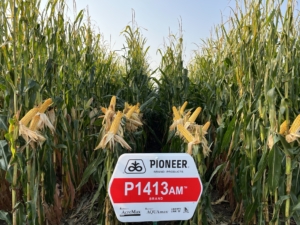
Topics:
- Growing Degree Unit Update/Weather Forecast
- Corn/Soybean Update
- Prioritizing Harvest….
- New Corn Hybrids and Soybean Series for 2024…
TEMPERATURES & GDU ACCUMULATION:
As of September 6th, we have accumulated approximately the following for Growing Degree Units in 2023:
Planting Date GDD’s2023 Average GDD Departure from average
April 17 2757 2680 +77 (+ 4 days)
April 26 2712 2621 +91 (+ 4.5 days)
May 9 2582 2512 +70 (+ 3.5 days)
June 1 2219 2227 -8 (even)
The April planting dates all have GDU accumulation to mature almost all maturities. The heat of the past week has allowed us to gain a little ground versus the average, but not as much as one would think considering the heat we had. Much of the reason for that is because overnight lows were normal (low-to-mid-60’s), even though highs were in the mid-to-upper 90’s. This is also one reason why the corn crop did move along stage-of-growth wise as one would’ve thought considering the heat. However, temps have really cooled down, and are forecasted to be this way into next week, which will slow crop progression on both corn and soybeans. See maps below.
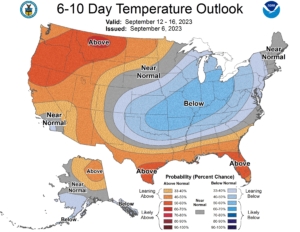
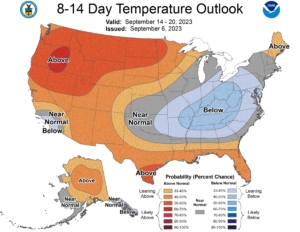
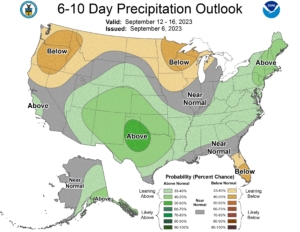
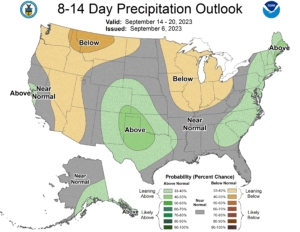
The above maps are the 6-10 & 8-14 day forecast maps for temperature and precipitation. As one can see from the maps, temps are forecasted to be normal to slightly below normal over the next 7-10 days with potential rebound in a week or so. Precipitation forecast is normal to slightly above normal. While this is a good trend, it won’t help drought conditions as normal moisture for this time of year is on the low end. However, note the big cool area in the mid and eastern cornbelt. Indiana, Ohio, Illinois had a very cool August as well….much cooler than we did.
Current Corn Conditions…..
- Much of the corn crop is as follows: April planting dates – 105-110 day hybrids 2/3-3/4 milk lines and 112-118 day 1/2 to 2/3. Later planting dates are 1/4 to 1/2 for the most part. Majority of crop is 1/2 to 2/3 milk line. Most fields will take another 7-14 days to finish (especially with the cooler temps forecasted), meaning we are seeing an extended grain fill period since stage of growth is behind what the raw GDU numbers above show.
- Considering the heat of the past week, staygreen in irrigated is holding up pretty well, but starting to see some ear droop on the irrigated (especially sands) along with typical very late-season N deficiency of lower leaves and normal plant senescence. For the most part, the irrigated corn crop came through the heat in pretty good shape….
- Sunlight: Baring the last couple of smoky days, overall sunlight has been 6-8% above normal over the past week. For the whole of grain fill (mid-July to now) we are right at normal. First half of grain-fill below normal, last half above. Sunlight has helped with grain color and test weight; however, I think any impact from reduced sunlight this year will show up in kernel depth and stalk strength.
- Disease: Since the last update, relative humidity was much below normal, especially over the weekend when RH’s were in the teens in some cases. This contributed to very high ET rates however. There has not been much for new corn diseases. We continue to hear of new tar spot (just a few lesions) showing up in the counties to the east and SE of us, however.
- Currently we are looking at a good quality irrigated corn crop….kernel depth and grain color look very good overall, much like normal. Expectations are for good test weights in the irrigated as well as some dryland fields yet.
- As one would expect, dryland corn is all-across-the-board….pockets of surprisingly good corn…..to….’the last three weeks have taken their toll’…
- Many area fields are down to their last schedule for irrigation. Keep in mind that 1/2 milk line corn requires 2.5″ to finish, more in hot weather. ET rates last weekend were in the .45″ Saturday and Sunday. The cool temps will greatly lower ET rates, but they will also slow crop progression. If soil moisture profile is good to full on heavy soils, should have enough to finish the crop….sandy soils may need one more round later next week depending upon temps, etc.
Current Soybean Conditions…..
- Soybeans are starting to turn in much of the area. The early group II soybeans are moving along quickly now. Many dryland corners and a few dryland fields may work late this week or next week, but cooler temps will delay this somewhat.
- One note of interest….there is a difference in how fast soybeans are maturing between tilled and no-tilled fields. Tilled fields are maturing quicker, even across varieties. The same is true for the corn crop as well. This is due to the fact that the tilled fields emerged quicker and and grew faster in the heat of June, whereas many no-tilled fields ‘sat’ so to speak early, and did not ‘take off’ until later. This is just an observation with no comment on yield outcomes between the two.
- Disease: Sudden Death Syndrome (SDS) has slowed down somewhat over the past week. White Mold infestations, on the other hand, are some of the heaviest we have seen in 10+ years in our area. By now most all area fields have some white mold infestation….with many having severe infestations. While their are Pioneer fields with heavier white mold infestations, overall we have liked the tolerance for white mold that we are seeing in the Pioneer soybean lineup compared to competitors….both Enlist and Xtend varieties. For more White Mold recommendations click here
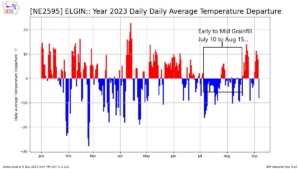
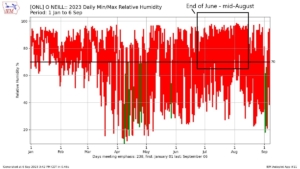

- The above charts help explain why we are seeing the heavier white mold. The first chart shows the daily average temperature departure from normal for 2023. Note the black square and just how cool July and early-August were….cool temps mean moisture, clouds, dew, etc. The following two charts show daily relative humidity for 2023 and 2022. Note again the black boxes on both, and just how high the RH was, and the extended time frame, of the relative humidity in 2023 vs. same time period in 2022, when white mold infestations were low. All of these factors led to a perfect storm for white mold development. Fungicide timing, product and varietal tolerance all play a role as well.
- Dectes Stem Borer. This insect enters the plant at a node and proceeds to ‘hollow out’ the stem leading to early plant death. So far not much one can do in the way of management for this insect yet. However, we are expecting to see heavier levels of this insect in our area versus the past few years. Keep this in mind as harvest begins and progresses.
- For more info see the following link….Dectes Stem Borer in Soybeans
- Lodged Beans….now what? By now, many area fields have some lodging….some area fields were lodging already at the beginning of August. Usually white mold tags along with the lodging. How do we improve efficiency for harvesting lodged soybeans? How much yield are you losing from lodging? How do you minimize harvest losses? To find these answers click the following link on Lodge Soybean Recommendations
Prioritizing Harvest!
Like most years, the extremes in weather (drought conditions, lack of sunlight, late drought and heat stress, etc.) in 2023 has the potential to influence late-season stalk quality. Stalk rots appear each year with varying degrees of severity. They are caused primarily by fungi and bacteria, but they can also result from environmental stresses. When these diseases or conditions happen, they weaken or destroy vascular tissue in the stalk, and the plant cannot transport water or carbohydrates effectively, which ultimately results in premature plant death and reduced grain fill. With this being said, keep in mind dryland acres and corners as these will be some of the first to lodge or to drop ears from moisture stress. Watch for those fields that lose staygreen quickly, or that have ears droop suddenly, as these are signs of premature plant death. The longer the plant stays green, the better the standability will be as harvest progresses.
New Corn Hybrids and Soybean Series
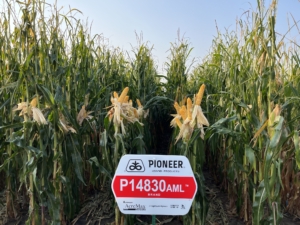
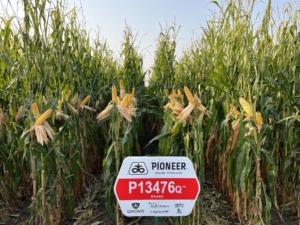

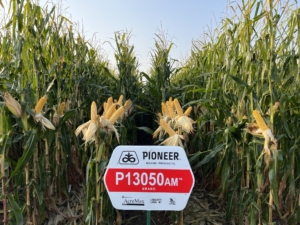
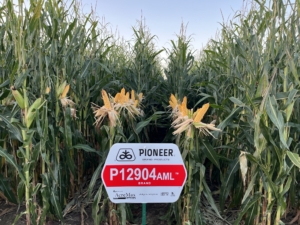
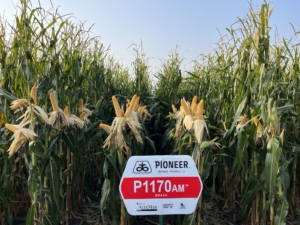
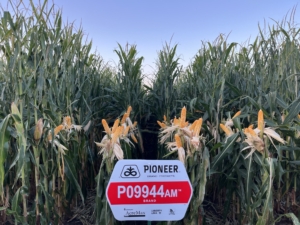
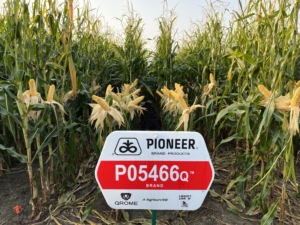
The above photos are some of the new hybrids for 2024 with a couple of the leader products from the show plot. For 2024, Pioneer has over seven new corn hybrids across the 105-114 day maturities. The photos above show some of these new products. They offer excellent drought tolerance with a couple of new AquaMax hybrids as well as good disease tolerance such as Goss’s Wilt and Grey Leaf Spot, with very good staygreen and improved brittle scores….in both AM, AML, & Qrome technology. These are some numbers to watch as harvest progresses. Notice also the new hybrid numbering system for 2024 and beyond. New hybrids will have 5 numbers now (running out of numbers again), however, as currently, the first two numbers will tell hybrid maturity.
Also, a brand new series of Enlist Pioneer soybeans will be launched later this fall. It is the next generation in soybean breeding, bringing a step change in yield with continued industry-leading agronomic traits and disease tolerance.
Thanks for reading! Please let us know any questions or concerns or comments you may have. Let us know how we can help as harvest gets going! Thanks for your support!
Starman Seed Service, Inc.

